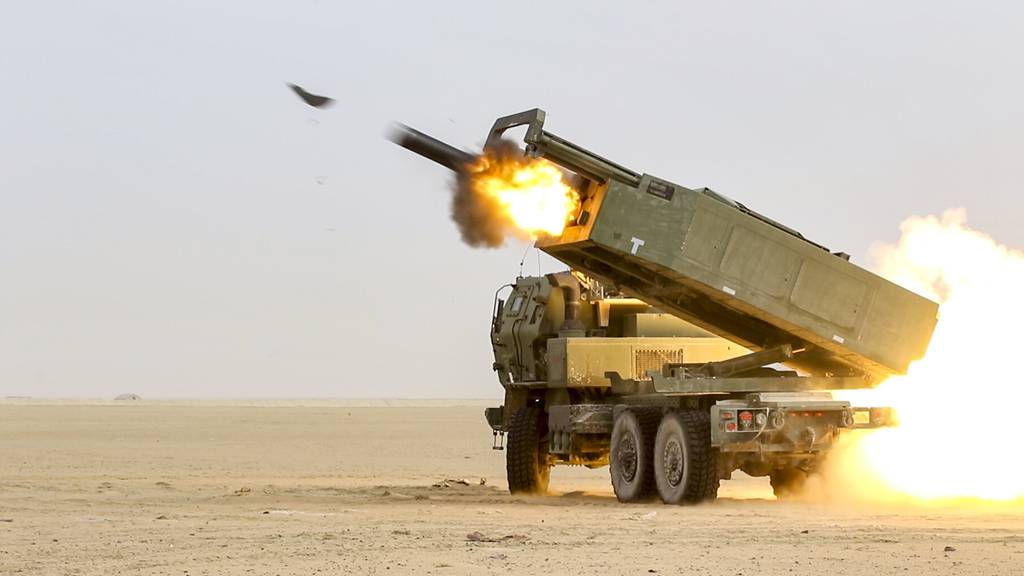However, Iran tested a satellite-guided missile similar to HIMARS called the Fath 360 during a recent military exercise.
Known as Eghtedar 1401, Iran recently conducted a significant ground forces exercise. By conducting major military operations in the desert, Iran was able to show off its huge arsenal.
The military of the nation tested the Fath 360 short-range surface-to-surface missile during the exercise, and the system was employed in combined arms drills close to Nasrabad, Isfahan.
The state-run Tasnim News said that the missiles can be fired at a speed of Mach 3, connect to satellites for rapid homing, and then strike their targets at a speed of Mach 4.
It is impossible to assess the missile’s effectiveness, but Iran seems to be confident in the capability of its newest missiles. During the practise, a Fajr-5 missile was also launched.
Tehran claims that the Fath 360 can track and eliminate hostile targets with remarkable degrees of precision.
The guidance system of this missile connects with many satellites every second and promptly corrects its path, Iranian commanders. Additionally, this rocket-launched missile is long-range, precise, and strategic and is fired from a launcher that can hold six projectiles.
The Fath 360 features a warhead that weighs 150 kilogrammes, a diameter of 30 centimetres, a weight range of 850-1,100 kilos, and a range of 75 kilometres. Its length is four metres. Due to its light weight and compact size, plus the availability of six, four, or two-round launch canisters, it might be used on a truck-based launcher.
In February, the Iranian Army Ground Force announced intentions to modernise current gear and add new equipment suitable for quick-response operations. They also built a missile unit.
In recent years, Iran has made notable strides toward producing a wide variety of indigenous weapons. In terms of armaments, this even enables their armed forces to be self-sufficient.
The nation has made very significant strides in the drone business, to the extent that it recently exported drones to Russia to support it in its conflict in Ukraine. These drones are currently showcasing their fighting prowess.
Due to their small size and low flying altitude, Iranian drones are difficult to detect by Ukrainian air defence systems.
Iranian drones had destroyed two BTR armoured infantry vehicles, two 122 mm self-propelled howitzers, and two 152 mm self-propelled howitzers in the brigade’s operational area, Ukrainian artillery commander.
Currently, it seems that the majority of Iranian drones have been stationed in the Kharkiv region, where the 92nd brigade and other Ukrainian forces have been engaged in a counteroffensive this month.
Iran’s Answer to HIMARS?
He emphasised that the US provided M31 GMLRS rocket for Ukraine’s HIMARS units, which is capable of transporting a 90-kilogram unitary warhead up to 70 kilometres at Mach 2.5. It might be discharged from the larger 12-round M270 MLRS that the UK has sent to Ukraine as military assistance or the smaller 6-round HIMARS.
In addition to being more manoeuvrable than its heavier-tracked cousin, the M270, the HIMARS missile launcher placed on a truck is also simpler to operate and maintain than the M270.
In a similar vein, he pointed out that Iran’s Fath 360 system appears to reflect these strengths, which supports Iran’s philosophy of asymmetric warfare.
Ukraine had just 26 HIMARS launchers and an undetermined number of M31 rounds at the beginning of September. However, the short reload time and mobility of HIMARS have helped Ukrainian troops dodge Russian counter-battery fire.
Similarly, Honrada said that the Fath 360’s light-wheeled construction would make it simple to manoeuvre in the area’s mountainous, arid, and urban settings.
US intelligence was primarily responsible for Ukraine’s HIMARS batteries being able to target Russian command posts and ammunition depots. The analyst continued by speculating that Iran’s Fath 360 could utilise Russia’s GLONASS satellite navigation technology.
